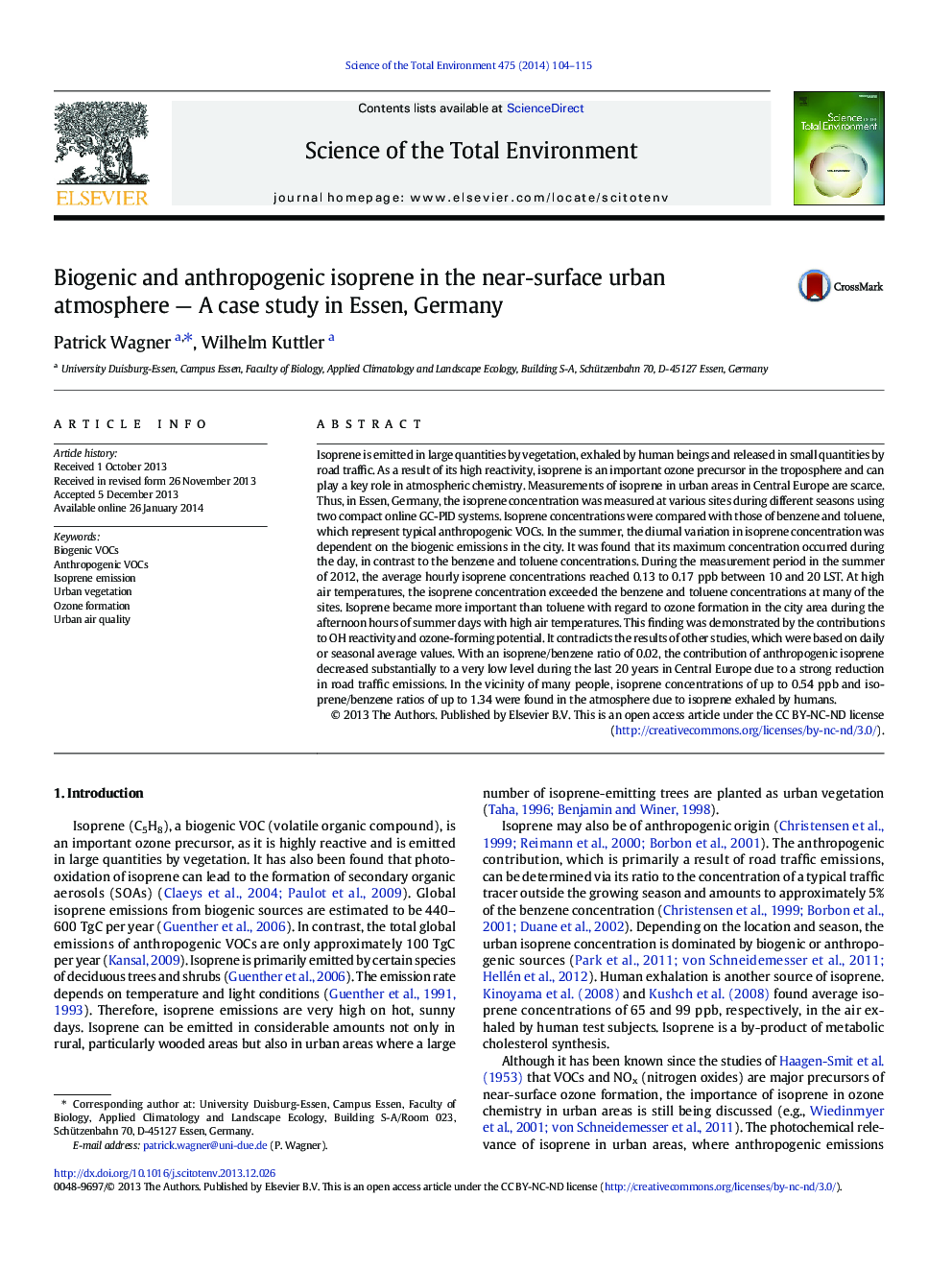| کد مقاله | کد نشریه | سال انتشار | مقاله انگلیسی | نسخه تمام متن |
|---|---|---|---|---|
| 6331549 | 1619790 | 2014 | 12 صفحه PDF | دانلود رایگان |
عنوان انگلیسی مقاله ISI
Biogenic and anthropogenic isoprene in the near-surface urban atmosphere - A case study in Essen, Germany
ترجمه فارسی عنوان
ایزوپرن بیوگرافی و انسان شناسی در فضای شهری نزدیک به سطح زمین - مطالعه موردی در اسن، آلمان
دانلود مقاله + سفارش ترجمه
دانلود مقاله ISI انگلیسی
رایگان برای ایرانیان
کلمات کلیدی
موضوعات مرتبط
علوم زیستی و بیوفناوری
علوم محیط زیست
شیمی زیست محیطی
چکیده انگلیسی
Isoprene is emitted in large quantities by vegetation, exhaled by human beings and released in small quantities by road traffic. As a result of its high reactivity, isoprene is an important ozone precursor in the troposphere and can play a key role in atmospheric chemistry. Measurements of isoprene in urban areas in Central Europe are scarce. Thus, in Essen, Germany, the isoprene concentration was measured at various sites during different seasons using two compact online GC-PID systems. Isoprene concentrations were compared with those of benzene and toluene, which represent typical anthropogenic VOCs. In the summer, the diurnal variation in isoprene concentration was dependent on the biogenic emissions in the city. It was found that its maximum concentration occurred during the day, in contrast to the benzene and toluene concentrations. During the measurement period in the summer of 2012, the average hourly isoprene concentrations reached 0.13 to 0.17Â ppb between 10 and 20 LST. At high air temperatures, the isoprene concentration exceeded the benzene and toluene concentrations at many of the sites. Isoprene became more important than toluene with regard to ozone formation in the city area during the afternoon hours of summer days with high air temperatures. This finding was demonstrated by the contributions to OH reactivity and ozone-forming potential. It contradicts the results of other studies, which were based on daily or seasonal average values. With an isoprene/benzene ratio of 0.02, the contribution of anthropogenic isoprene decreased substantially to a very low level during the last 20Â years in Central Europe due to a strong reduction in road traffic emissions. In the vicinity of many people, isoprene concentrations of up to 0.54Â ppb and isoprene/benzene ratios of up to 1.34 were found in the atmosphere due to isoprene exhaled by humans.
ناشر
Database: Elsevier - ScienceDirect (ساینس دایرکت)
Journal: Science of The Total Environment - Volume 475, 15 March 2014, Pages 104-115
Journal: Science of The Total Environment - Volume 475, 15 March 2014, Pages 104-115
نویسندگان
Patrick Wagner, Wilhelm Kuttler,
